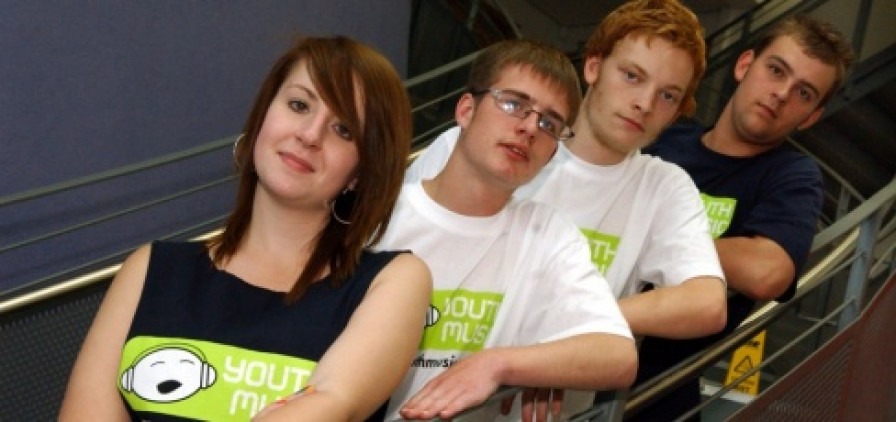Voltage Programme: Recruiting Young Volunteers

Challenges with recruitment in the Voltage volunteering programme
This page is part of a resource collection for practical guidance around providing volunteering opportunities.
The Voltage programme aimed to work with young people aged 16-25, and particular looked-after and BAME young people. There were several challenges with identifying and recruiting these young people, as follows:
- The main challenge with recruiting young volunteers generally to the Voltage programme was having a targeted yet open and accessible approach to recruiting volunteers. Voltage partners had a remit to focus on Looked After and BAME young people but the opportunities were also advertised openly
- Another key challenge is having the necessary time, taking time, and ensuring capacity, resources and processes are in place for being ready for and recruiting volunteers
- If the volunteer experience is aimed to be created around the interests and needs of the young people, recruitment can be difficult because there isn’t necessarily a clearly defined role to apply for.
- Building up the reputation of a volunteering programme takes time and if it’s new, young people may find it harder to want to take part.
- The sometimes negative stigma attached to the term ‘volunteering’ (i.e the typical image of someone volunteering in a charity shop)
- Appealing to young people’s needs and interests, ensuring that they know very clearly what they could gain from being involved.
How volunteers were recruited for Voltage
Voltage partners used a range of methods for recruiting volunteers. Many partners found that over time, recruitment became less challenging, as the reputation of the programme grew and the impact on the young people, organisation and community were more apparent.
- At Wirral Youth Theatre the volunteers were recruited from the current membership music projects through an informal interview process. Young people are referred to WYT by other statutory and voluntary organisations (e.g. Youth Services) or come via word of mouth, reputation or specific marketing. When volunteers were recruited they signed a ‘contract’ or ‘agreement’ and were given expenses (see guide to covering expenses for volunteers). Other incentives included performance opportunities. The group enjoyed making music together which in turn inspired them to want to be positive ambassadors for music when working with other young people.
- CYMAZ worked in partnership with the Foyer Housing project and Helston Youth Centre to recruit young people as volunteers. Members of staff in the settings were briefed on the programme and identified young people who would most benefit or be interested in volunteering. Young people took part in a briefing about the project and decided whether to be involved. They were then formally recruited by agreeing to the role profile and volunteer agreement. This approach worked well as young people were identified by key workers who understood their interests and needs and enable the Voltage programme to target and work with vulnerable young people. Through the clarity of the Partnership Agreement with the setting, the programme goals and objectives were clear from the start.
- Many Voltage partners produced imaginative and creative recruitment tools to appeal to young people. For example, New Roots created a film with their first cohort of volunteers:
Spotlight on SoundLINCS
“We recruited young people in partnership with National Charity Barnardo’s who manage the Lincolnshire Leaving Care Service. Of the 6 young people we met, 4 live in Foster Care, 1 lives in Residential Care, and 1 lives independently. The 6 young people were identified to us by a Young Person’s Advisor.
“Our process for recruitment of young people was:
- Meeting with Participation Manager for Children’s Services who agreed to broker a meeting/presentation with Barnardo’s
- Meeting/presentation to Manager and Team Leaders of Barnardo’s. This also included setting up a timeframe, future meetings and preferred methods of communication
- Creating a small group of other partners including the Virtual Head for Children in Public Care in Lincolnshire and an independent training organisation with experience of working with young people and employing a range of accreditation systems
- Meeting with young people and establishing their interests in volunteering and their wider aspirations. This included what SoundLINCS could offer in terms of ongoing and planned projects
“Whilst our recruitment process achieved what was planned, we have learnt from the experience of managing Voltage over the previous year. The main learning points are:
- We should try to recruit young people in clusters of 3 rather than one group of 6 who live geographically within easy travelling distance of each other. Ideally this would be 2 Young Ambassadors and 1 Associate Young Ambassador. This would help with general planning and the logistics of the volunteers working together
- We should establish a geographical ‘centre’ for each cluster with meeting facilities hosted by a local partner (e.g a Youth centre or Arts Centre)
- We should try to connect young people to a regular, open and long term projects that will last the duration of their volunteering. They should be, in addition, contrasting projects for them to engage with
- We should plan more opportunities to meet and talk with referred young people so that we can ensure that what we offer meets with young people’s interests, hopes and expectations
- We should ensure that referred volunteers understand that a motivational interest in music making is fundamental to the opportunities that we can offer”
Future Projects
We worked with various organisations during the recruitment period including NNREC (Norwich & Norfolk Racial Equality Council), YMCA Norwich, MAP (Mancroft Advice Project) and Children's Services and have strengthened those relationships. 10 young 'hard to reach' people were engaged and supported on taster volunteering opportunities as Young Reporters as a result of these partnerships.

